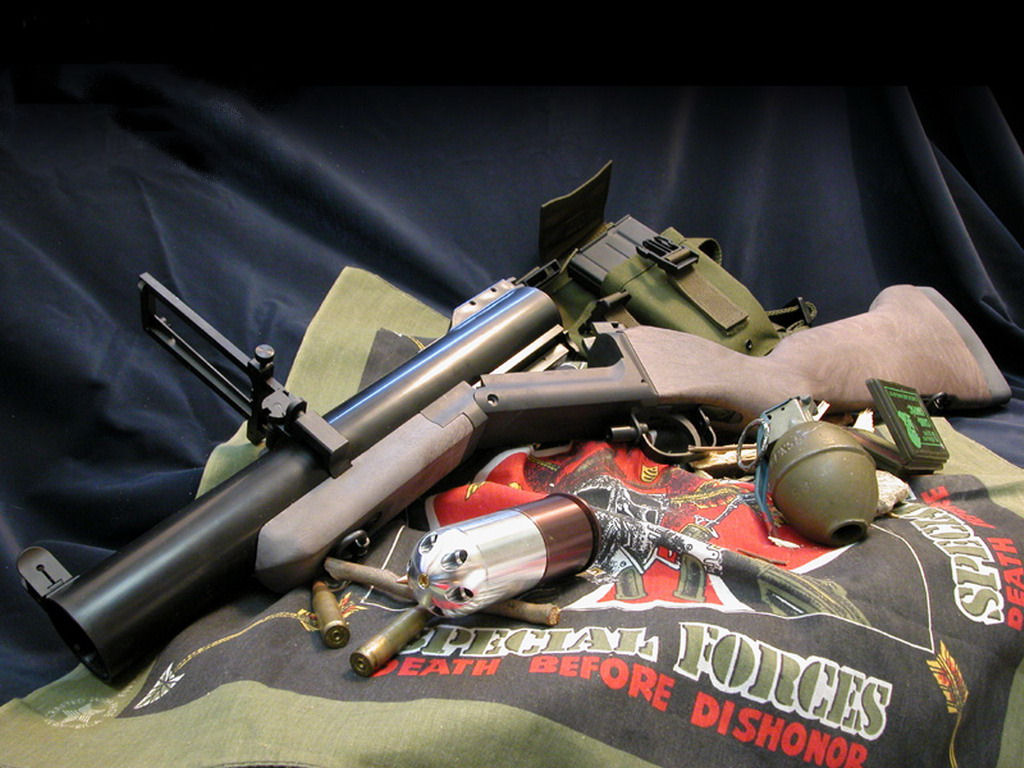

It first served in Vietnam and was well-liked by troops, often referred to as "the platoon leader's artillery" and acquiring nicknames like "blooper" and "thumper" due to its distinctive firing sound. With the addition of a redesigned sight, it was adopted as the M79 in December 1960. It was clearly superior to the three-round magazine-fed T148 grenade launcher (not related to the XM148) that it competed against, and a refined variant, the S-5, was chosen by the US Army for testing as the XM79. This was a single-shot, break-open weapon called S-3 that resembled an oversized sawed-off shotgun. While technical issues dogged the main project, a grenade launcher prototype from Springfield was pulled aside in an attempt to develop a standalone weapon to fire the round NIBLICK had created. The M79's development spun off from the SALVO advanced rifle program.

#M79 grenade launcher portable#
From this came the idea of designing an infantry launcher for this round, with the goal being to design a weapon with greater range than a thrown hand grenade and greater accuracy then a rifle grenade launcher, while having it remain more portable than a light mortar. The round for the M79 was developed in 1952 under project NIBLICK, with the concept being to use the high-low recoil mitigation system developed by Nazi Germany in WW2 to produce an effective high-explosive round that could still be shoulder-fired by a single man. Interesting but definitely in the category of don’t try this at home.The M79 grenade launcher is an American held-held single-shot grenade launcher, and one of the first portable grenade launchers in the modern sense of the term. Homemade Grenade Launchers: Constructing the Ultimate Hobby Weapon (Paperback), Ragnar Benson. The official US army source book on this type of weapon. It is an example of a classic weapon design, simple, easy to use, versatile and portable Grenade Launchers 40-Mm Fm23-31 (Paperback) by Us Government. Versions were produced by Daewoo in South Korea and by the South African arms company Milcor. The M79 proved a very popular weapon among armed forces and para-military organisations around the world seeing service in the armed forces of Turkey, Australia, Israel and some South American countries. This fired 20 – 27 steel pellets which were lethal at close range but like all shotguns rapidly less effective as range increased. For close range fighting this was replaced in 1966 with a shotgun like buckshot round the M576. The Flechette round, some times called a Bee Hive round fires 45 steel darts or Flechettes, this proved rather ineffective as the darts would not penetrate if they didn’t hit point first. The explosive (HE) round explodes to produce 300 fragments which are lethal to a radius of 5 meters, it must travel 30 meters before it arms itself but before it is armed it is normally travelling fast enough to kill who ever it hits. Also a non lethal crowd control ‘rubber bullet’ round and CS gas grenade were developed. The other problem at close quarters was the fact the round had to travel 30 meters before arming itself which meant many users had to carry a back up weapon for close quarters, due to the size and weight of the M79 this back up weapon was normally a handgun, eventually the M79 was replaced by an under slung version which allowed the user to be a rifleman too.Ī variety of rounds were developed adding to the weapons flexibility - these include shrapnel, smoke, explosive, flechette and shotgun-like buckshot rounds, as well as flares. A skilled user could hit a man sized target at a range of 140 meters but it was hampered by a very slow rate of fire making it less useful for suppressing fire during a skirmish.

The first weapons were delivered to frontline US Army troops in 1961 who found it a simple, portable and reliable weapon ideal suited to the jungle conditions of Vietnam. Early designs focused on firing a 40mm grenade which was 46mm long but attempts to create a multi shot weapon stalled and the single shot design was carried forward to become the M79 in December 1960. The idea was to provide the infantryman with a weapon that had greater range than a rifle fired grenade but was smaller and lighter than a mortar. The M79 was to have a long term impact on infantry weapon development as can be seen in many modern under slung grenade systems which form part of modern infantry assault rifles. It gained various nicknames during the Vietnam War due to its distinctive firing sound, these included “Thumper” or ‘Blooper’ although some Australian troops called it a ‘Wombat gun’. Visually it looks like a simple large barrelled saw off shotgun using a break open mechanism. The M79 Grenade Launcher is a very distinctive and simple weapon which first appeared during the Vietnam War.


 0 kommentar(er)
0 kommentar(er)
